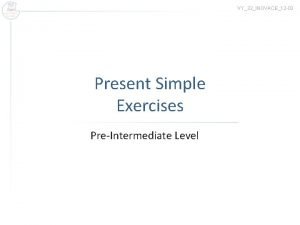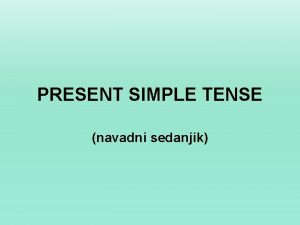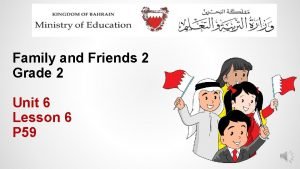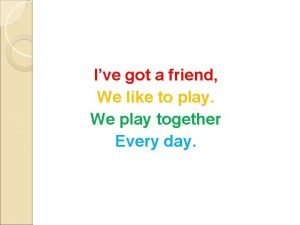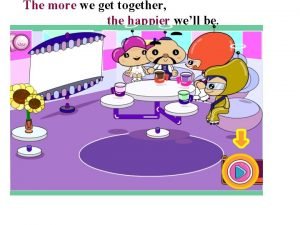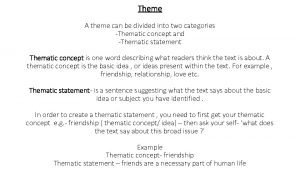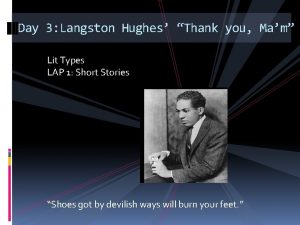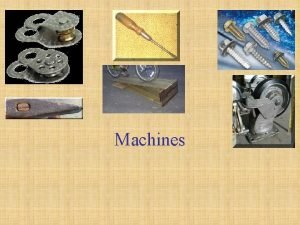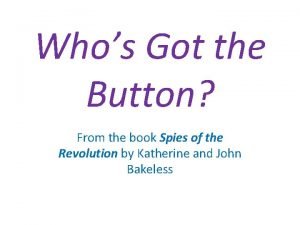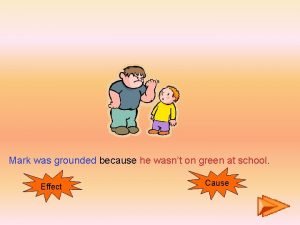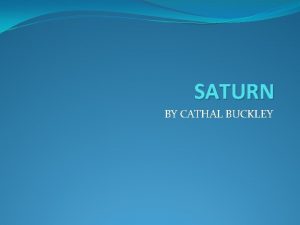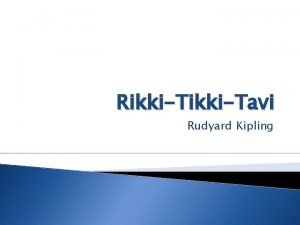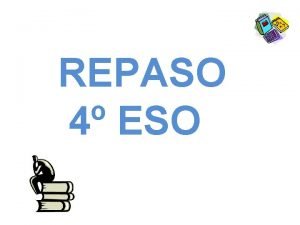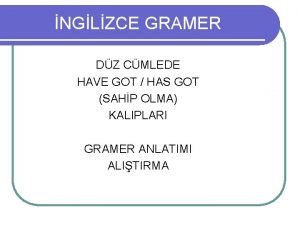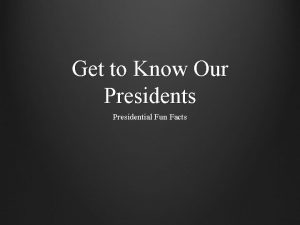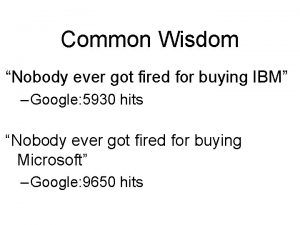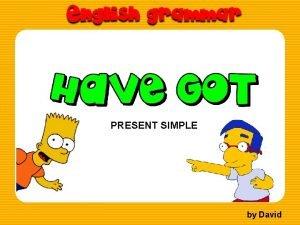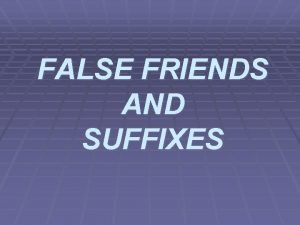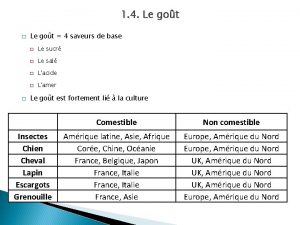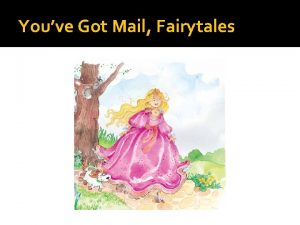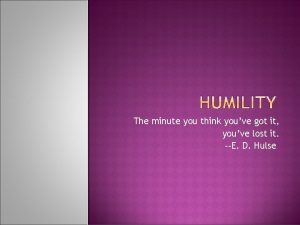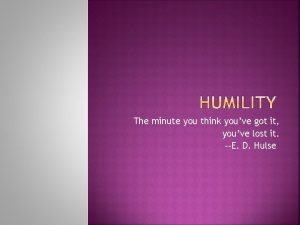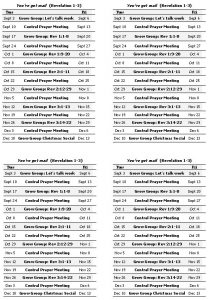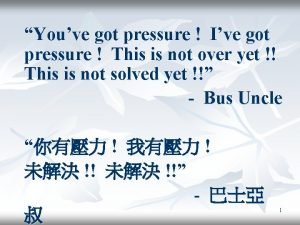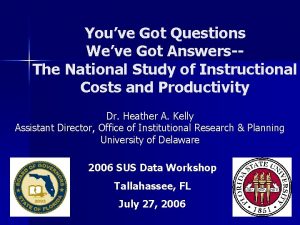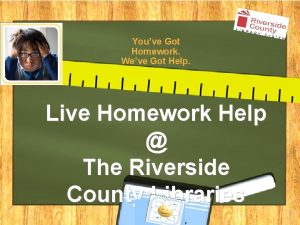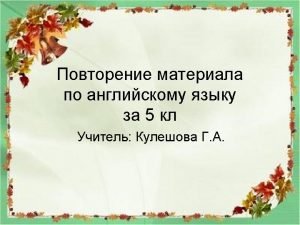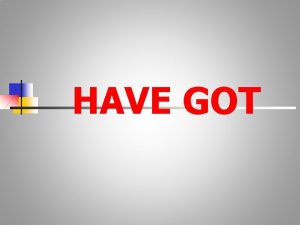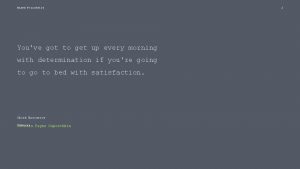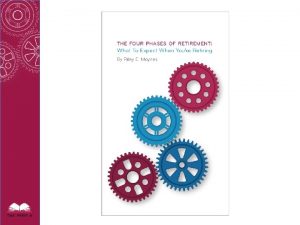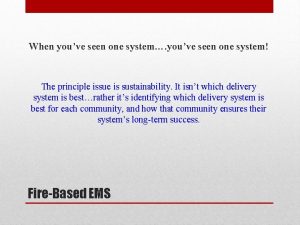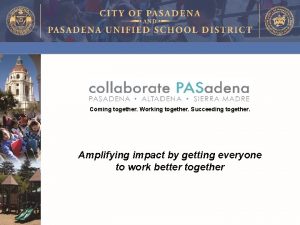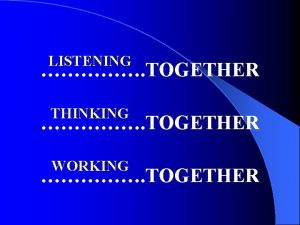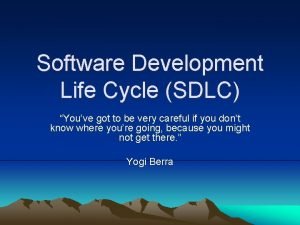Get it TOGETHER Youve got to get ORGANIZED





































- Slides: 37

Get it TOGETHER….

You’ve got to get ORGANIZED You need supplies 1. 2. 3. 4. 5. 3 -ring Binder Notebook Dividers Pens, Pencils, & Highlighters Paper Notecards

• Choose a notebook that suits you. – – – Not too big, not too small Sturdy! You don’t want to have to replace it. View binder or non-view binder. Price doesn’t always reflect quality. If you buy wisely, you can use it for a long time.

• Tab dividers – Purchase pre-made tab dividers – Make your own – Re-useable tabs

• Standard loose-leaf paper – Pre-punched notebook paper – 8 1/2 x 11” paper is best – If you prefer unlined paper, pre-punch it and have it in your binder for use – Keep a small hole punch in your binder for use with class hand outs

I can name that in a Note… • Note-taking is a important strategy for classroom success. • There is NO BEST WAY to take notes. • Find a style of note taking that consistently gives you good results.

Guidelines for Note Taking • Keep track of your notes by heading your paper with: 1. 2. 3. 4. 5. Date Name of Course Lecture Topic Number pages Write headers within each set of notes

• Keep notes from one class separated from the notes for other classes. 1. Use dividers to keep notes separated. 2. Some prefer to use several spiral notebooks, rather than 1 large binder. 3. Keep a small hole punch to place instructor handouts with your notes.

• Use the right writing instrument! 1. Use ballpoint pens for note-taking. 2. Felt-tip pens blur and soak through the paper, leaving spots underneath. 3. Pencils smear and fade over time. 4. Stick with standard color ink, blue or black.

Worksheet (Fill-in-the blanks) To speed up your note taking, use abbreviations

• To speed up your note taking, use abbreviations 1. 2. 3. 4. 5. 6. 7. 8. 9. 10. Equal: = With: w/ Without: w/o Number: # Therefore: th 4 And: + And so forth: etc. For example: e. g. Against: vs. Government: gov’t 11. 12. 13. 14. 15. 16. 17. 18. 19. 20. Introduction: intro. Information: info. Department: dept. Advantage: adv. Organization: org. Maximum: max. Individual: ind. Compare: cf. Association: assoc. Politics: pol.

I don’t understand you… It doesn’t matter how much you know if the instructor can’t understand what you write! *If you know your handwriting is poor, print everything. Illegible handwriting makes what you write, hard to read. This could cost you the grade you deserve.

An easy way to make Note Cards Make 6 note cards using one sheet of paper

How to be an effective note-taker … use the TASSEL Method • • • “T” “A” “S” “E” “L” Try not to doodle while taking notes. Arrive at each class prepared. Sit near the front of the classroom. Sit away from friends. End daydreaming. Look at the teacher.

• Try not to doodle while taking notes. 1. 2. Doodling breaks your concentration and takes your focus from note taking. Each time you feel yourself wanting to doodle, take that urge and write down what the teacher is saying. • Arrive at each class prepared. 1. 2. Read all assigned readings and review all previous lecture notes so that you will understand what is covered in the lecture. If you are not prepared, you will be more likely to daydream and become distracted • Sit near the front of the classroom. Sit near the front so you can clearly see the teacher, the board, and any overheads, Power Point or computer presentation.

• Sit away from friends. 1. 2. If you sit near friends, you will be tempted to talk or pass notes to them. If you have assigned seats and you have to sit near friends, resist talking to them or passing notes during class. • End daydreaming. 1. 2. If you become aware that you are daydreaming, immediately change your position. Sit forward and look at the teacher. Turn your attention to the teacher and write down whatever he/she is saying, even if you may later find that it was not important.

• Look at the teacher. 1. 2. Make eye contact with the teacher as much as possible. This will give the feeling that you are having a conversation with the teacher. Whenever you are not taking notes or looking at the board, overheads, Power Point presentation, or computer screen, keep your eyes on the teacher.

• Class time, note taking, study time; these are all “NO CELL PHONE” activities!

read, READ!!! “The more that you read, the more things you will know. The more that you learn, the more places you'll go. ” ~ Dr. Seuss ~

Read to Know Reading is a lifelong skill and is key to your success in school and in your career. It is also a necessary part of any study system. You gain essential information from your textbooks by using these 3 strategies to improve the way you read. 1. Take control of you reading by becoming an active reader 2. Read for main ideas, details, and their implications. 3. Use a marking system to focus your attention and identify information to recite and review. *Active readers control their interest level and concentration. They read with a purpose. They know what information to look for and why. Active readers question what they read and look for ways to relate the author’s ideas to their own experience and prior knowledge.

Use a HIGHLIGHTER BE AN ACTIVE READER

Let’s READ as a Active Reader “One of the most important goals that a student can aim for is an expanded vocabulary. One reason this goal is important is that an expanded vocabulary can improve students’ writing. With sufficient words and definitions at their command, students will have less difficulty writing what they mean. Also, increased reading improves vocabulary, which leads to greater comprehension. A third reason for improving vocabulary is the confidence the students feel when they use words correctly. Students are less afraid to speak out in class discussions or give reports when they know they are not going to mispronounce or misuse words. Increasing the vocabulary is a worthwhile goal for students who also what to improve their speaking, reading, and writing. ” Now find: 1. 2. The main idea - the most important thing in the paragraph. 3 supporting details - these tell about the main idea.

The Main Idea 3 Supporting Details 1. 2. 3.

The Main Idea “One of the most important goals that a student can aim for is an expanded vocabulary. ” 3 Supporting Details 1. An expanded vocabulary improves writing. 2. An increased vocabulary improves reading. 3. An improved vocabulary results in confidence.

• When reading a text, look for signal words or phrases. – “first”, “next”, “also”, etc. – “one reason” and “third reason” These help you learn things in the right order or confirm what you have in your notes from a class lecture.

FOLDABLE Activity This foldable can be used many ways: • a series of steps (add more sheets of paper to add more steps) • a timeline • sequencing from simple to complex • list of terms

I remember when… You will always be required to memorize information for tests. – Use the BREAK method B - Break memorizing into short time periods. R - Recite information aloud. E - Establish mnemonics. A - Always try to picture information in your mind. K - Key words help.

• Break memorizing into short time periods. 1. 2. 3. Never try to memorize a lot of information at one time. This leads to overloading and your mind won’t let you memorize any more information. Or it leads to boredom and you can’t get motivated to keep working. Try to arrange short, frequent blocks of time for memorization. Spend a specific amount of time working on methods to memorize some information and then review theses at certain times throughout your studying time. NEVER CRAM!!! Don’t try to memorize information you haven’t worked on the night before a test. If you do, this will make you anxious. However, before a test you should review what you’ve memorized.

• Recite information aloud. 1. 2. 3. Read aloud the note cards you are studying. Read questions on one side and then the answers on the other side. After reading aloud, test yourself on the information by shutting your eyes and asking and answering the questions again. If you get the answer wrong, write it several times as you say it over and over.

• Establish mnemonics to help you remember information. 1. 2. Mnemonics are words and letters that help you remember information. To make up a mnemonic, make a list of the important facts you need to remember. Use the first letter of each fact to make up another word that will help you remember the ideas to be memorized. Here’s an example: “HOMES” was created to help students remember the names of the Great Lakes. H-Huron O-Ontario M-Michigan E-Erie S-Superior

4. Another type of mnemonic involves using the first letters of the words or ideas to be memorized to create a “catchy” sentence. Using the first letters of the Great Lakes: M (Michigan), H (Huron), S (Superior), O (Ontario), E (Erie) Make these into the sentence: “Monkeys have seven orange ears. ”

Now you try…. • To shoot a gun you need to follow “ 5” steps. 1. 2. 3. 4. 5. Aim Squeeze Breath Sight Relax Create a word by putting these in order to make a mnemonic word. This is called an “Acrostic. ”

How’d you do… • To shoot a gun you need to follow “ 5” steps. 1. 2. 3. 4. 5. Aim Squeeze Breath Sight Relax Here they are in order as an “acrostic. ” “B” Breath “R” Relax “A” Aim “S” Sight “S” Squeeze

How about these… • There are 9 planets in our solar system. Make your own mnemonic sentence for these. • • • Mecury Venus Earth Mars Jupiter Saturn Uranus Neptune Pluto

Here are some examples. . • Here are some sentences to help you remember the planets in order from the sun. • "My Very Educated Mother Just Served Us Nine Pickles. ” • "My Very Easy Method Just Speeds Up Naming Planets. "

• Always try to picture in your mind words or pictures to help you remember. 1. 2. 3. As you study, try to visualize in your mind words and pictures that help you remember. For example, if you’re trying to remember the parts of an animal cell, you may picture in your mind the diagram from your science book where the different parts are shown. After looking at the picture, shut your eyes and try to recall as much detail as possible. If you can’t recall the details, study the picture and then repeat the recall process. When answering a test question involving material you visualized, shut your eyes for a second and try to recall the picture, just as you did when you were studying.

• Key words help! 1. If you have to memorize words or facts that are new or hard for you, it may help to associate these with key words. For example, if you can’t recall the meaning of the word “ziggurat” ( a temple built in a series of terraces with each terrace smaller than the one below with a staircase and a shrine on top) for a history test, look at the word to find something that is related to the meaning. The small word “zig” appears in the word and the series of terracea “zigzag” up. 2. It is best to combine key words with visualizing. Once you identify a key word, picture in your mind a relationship between the key word and the original word (picture the zig-zag pattern of the ziggurat).
 Good morning elves
Good morning elves Get in get on get off get out
Get in get on get off get out Present simple exercises pre intermediate
Present simple exercises pre intermediate Have got has got pravila
Have got has got pravila Family and friends 2 unit 6 lesson 1
Family and friends 2 unit 6 lesson 1 One direction songs one thing
One direction songs one thing I've got a friend we like to play we play together
I've got a friend we like to play we play together Vragen
Vragen The more we get together the happier we'll be
The more we get together the happier we'll be How long does a female dog stay in heat
How long does a female dog stay in heat Divided by two theme
Divided by two theme Get up get moving quiz
Get up get moving quiz Get focused get results
Get focused get results Pseudocode examples
Pseudocode examples Get up get moving quiz
Get up get moving quiz Germer
Germer Get up get moving quiz
Get up get moving quiz Shoes got by devilish ways
Shoes got by devilish ways I got that wrong
I got that wrong I got up early one morning and rushed into the day
I got up early one morning and rushed into the day A screw is a wrapped around a rod
A screw is a wrapped around a rod Lydia darragh
Lydia darragh Hello hello everyone i nanny shine
Hello hello everyone i nanny shine Congratulations you got grounded
Congratulations you got grounded Read the text and choose the correct item
Read the text and choose the correct item Saturn
Saturn Kipling nag
Kipling nag Verbo to be en ingles para niños
Verbo to be en ingles para niños You're a mean one mr grinch graph
You're a mean one mr grinch graph Create your own top level domain
Create your own top level domain Have got ile ilgili cümleler
Have got ile ilgili cümleler Presidential fun facts
Presidential fun facts Got
Got Nobody ever got fired for buying ibm
Nobody ever got fired for buying ibm Write the short forms
Write the short forms Present simple have got
Present simple have got Suffixes for false
Suffixes for false Got 4
Got 4


